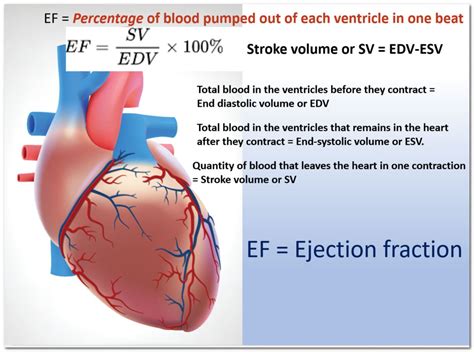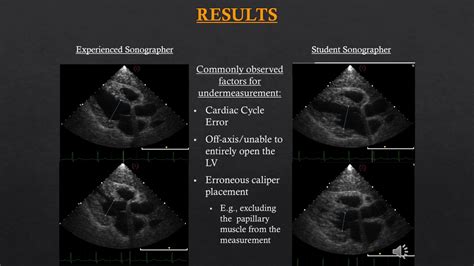lv ef 68 | ejection fraction measurement methods lv ef 68 Ejection fraction typically refers to the left side of the heart. It shows how much oxygen-rich blood is pumped out of the left ventricle to most of the body’s organs with each . Before the debut of Abloh's latest menswear runway show, LV offered a first look at the house's Nike collaboration, giving the sportswear giant's all-time Air Force 1 a monogram makeover. With 50 .
0 · what does ejection fraction mean
1 · most accurate ejection fraction measurement
2 · how to check ejection fraction
3 · how to assess ejection fraction
4 · ejection fraction measurement methods
5 · ejection fraction during stress test
6 · echocardiogram measure ejection fraction
7 · accuracy of echocardiogram ejection fraction
The handheld video endoscopes from GE are of extremely high quality which are constantly being developed. Touch screen and an easy user interface. The GE XL Lv are available in 4 mm, 6.1 mm and 8.4 mm diameter and probes from 2 meters to 10 meters in length. BROCHURE PDF.
Ejection fraction typically refers to the left side of the heart. It shows how much oxygen-rich blood is pumped out of the left ventricle to most of the body’s organs with each . A normal range is between 52% and 72% for males and between 54% and 74% for females. An ejection fraction that’s higher or lower may be a .The ejection fraction is one of the most common parameters used to diagnose heart failure. It refers to the percentage of blood the left ventricle pumps out during the systolic phase. Normal .For an ejection fraction in the range of 50% to 55%, most of the commonly used tests, if carefully performed, are accurate within a few percentage points (e.g. 55% plus or minus 3%). With .
A normal heart’s ejection fraction is between 55 and 70 percent. This indication of how well your heart is pumping out blood can help to diagnose and track heart failure. It is important to note, however, that you can have a normal ejection fraction measurement and still have heart failure. Ejection fraction typically refers to the left side of the heart. It shows how much oxygen-rich blood is pumped out of the left ventricle to most of the body’s organs with each contraction. LVEF helps determine the severity of dysfunction on the left side of the heart.
A normal range is between 52% and 72% for males and between 54% and 74% for females. An ejection fraction that’s higher or lower may be a sign of heart failure or an underlying heart condition..The ejection fraction is one of the most common parameters used to diagnose heart failure. It refers to the percentage of blood the left ventricle pumps out during the systolic phase. Normal Ejection Fraction by Age is 55 to 65%.For an ejection fraction in the range of 50% to 55%, most of the commonly used tests, if carefully performed, are accurate within a few percentage points (e.g. 55% plus or minus 3%). With respect to the lower limit of “normal” LVEF, it is important to remember that even at rest, the LV pumps a slightly different amount of blood in every beat. A left ventricle (LV) ejection fraction of about 50% to 70% is categorized as normal. A mildly reduced LV ejection fraction is usually between 41% and 49%. A reduced LV ejection fraction is usually 40% or less.
Left ventricular ejection fraction (LVEF) 1 has persisted as the primary measure of left ventricular systolic function despite flaws in this approach. Patients with heart failure are relieved when the LVEF is reported as normal, and clinicians may use the report of a depressed LVEF to persuade patients of the need for treatment. Ejection fraction (EF) is a percent measurement of how much blood the left ventricle (LV) pumps with each contraction. The left ventricle (LV) does not empty out with each contraction. Normally the left ventricle (LV) ejects between 50% and 70% of the blood it contains.Ejection fraction is simple to calculate; if the left ventricle contains 100 ml of blood at the end of diastole and 40 ml is pumped out during systole, then the ejection fraction is 40%. Thus, the ejection fraction is the stroke volume (SV) divided by the end-diastolic volume (EDV): Left ventricular ejection fraction (LVEF) is the central measure of left ventricular systolic function. LVEF is the fraction of chamber volume ejected in systole (stroke volume) in relation to the volume of the blood in the ventricle at the end of diastole (end-diastolic volume).
A normal heart’s ejection fraction is between 55 and 70 percent. This indication of how well your heart is pumping out blood can help to diagnose and track heart failure. It is important to note, however, that you can have a normal ejection fraction measurement and still have heart failure.
what does ejection fraction mean

most accurate ejection fraction measurement
Ejection fraction typically refers to the left side of the heart. It shows how much oxygen-rich blood is pumped out of the left ventricle to most of the body’s organs with each contraction. LVEF helps determine the severity of dysfunction on the left side of the heart. A normal range is between 52% and 72% for males and between 54% and 74% for females. An ejection fraction that’s higher or lower may be a sign of heart failure or an underlying heart condition..

The ejection fraction is one of the most common parameters used to diagnose heart failure. It refers to the percentage of blood the left ventricle pumps out during the systolic phase. Normal Ejection Fraction by Age is 55 to 65%.
For an ejection fraction in the range of 50% to 55%, most of the commonly used tests, if carefully performed, are accurate within a few percentage points (e.g. 55% plus or minus 3%). With respect to the lower limit of “normal” LVEF, it is important to remember that even at rest, the LV pumps a slightly different amount of blood in every beat. A left ventricle (LV) ejection fraction of about 50% to 70% is categorized as normal. A mildly reduced LV ejection fraction is usually between 41% and 49%. A reduced LV ejection fraction is usually 40% or less. Left ventricular ejection fraction (LVEF) 1 has persisted as the primary measure of left ventricular systolic function despite flaws in this approach. Patients with heart failure are relieved when the LVEF is reported as normal, and clinicians may use the report of a depressed LVEF to persuade patients of the need for treatment.
Ejection fraction (EF) is a percent measurement of how much blood the left ventricle (LV) pumps with each contraction. The left ventricle (LV) does not empty out with each contraction. Normally the left ventricle (LV) ejects between 50% and 70% of the blood it contains.Ejection fraction is simple to calculate; if the left ventricle contains 100 ml of blood at the end of diastole and 40 ml is pumped out during systole, then the ejection fraction is 40%. Thus, the ejection fraction is the stroke volume (SV) divided by the end-diastolic volume (EDV):

how to check ejection fraction

wholesale louis vuitton purse
探索路易威登 LV Graphical Straw Hat: An elegant topper for summer looks, the LV Graphical Straw Hat takes up one of the season’s key themes with its bold, striped signature band. Fashioned from natural straw, each hat displays a unique colour variation. It pairs perfectly with the LV Graphical beach blanket and pillow for a stylishly .
lv ef 68|ejection fraction measurement methods

























